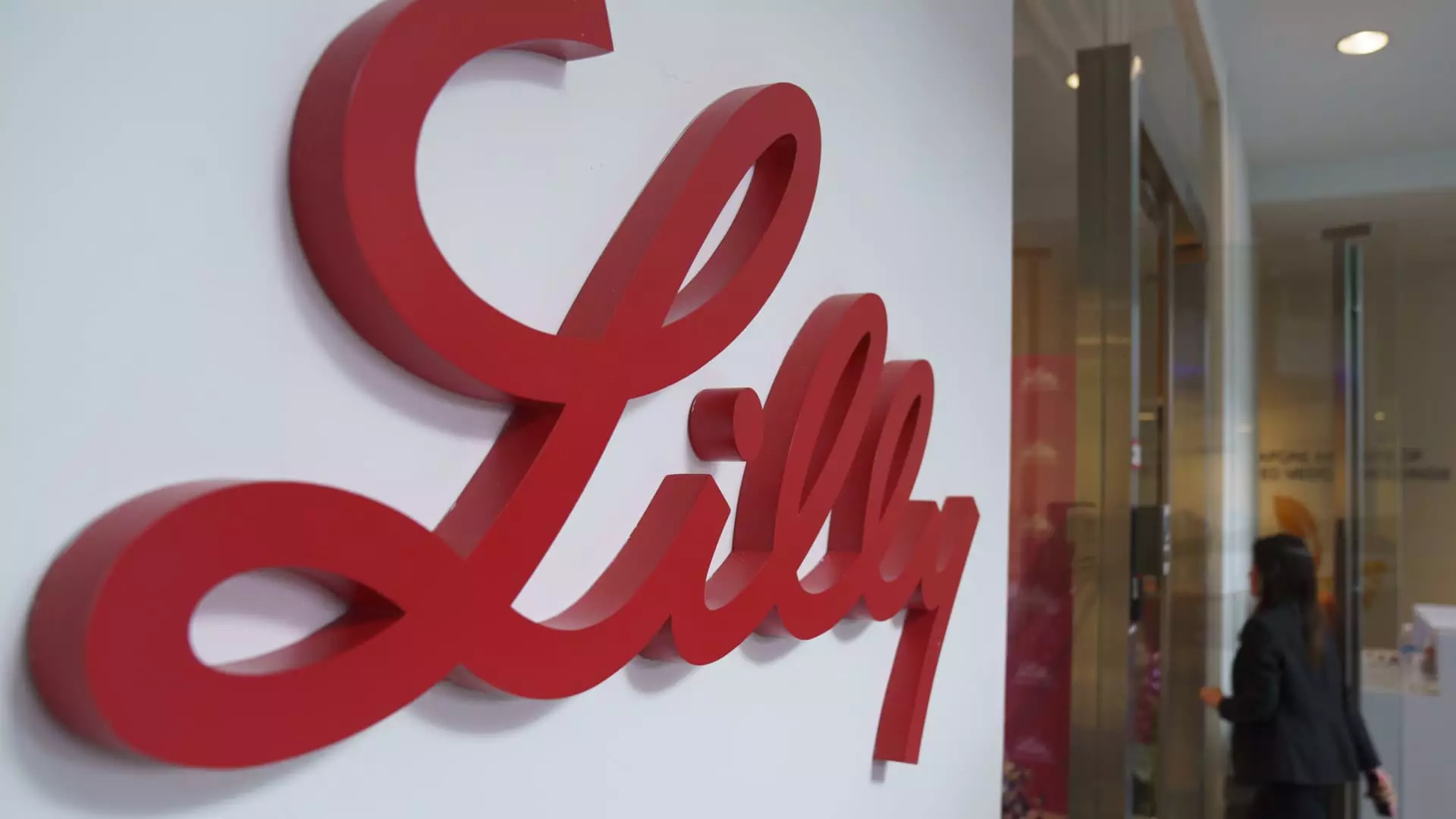In a surprising turn of events, pharmaceutical giant Eli Lilly has revised its revenue outlook for the upcoming fiscal year, down from its earlier estimates. The company announced on Tuesday that it now expects full-year revenue for 2024 to be around $45 billion, a modest decline from its previous projections of between $45.4 billion and $46 billion. This decision stems from the realization that the demand for its pioneering weight loss and diabetes treatments is not living up to the company’s initial ambitions. Despite this adjustment, the forecast still represents a significant year-on-year increase of 32%, indicating an overall growth trajectory for the company.
Eli Lilly’s share price took a noticeable hit, dropping over 7% in midday trading following the news of the adjusted forecast. The competitive landscape in the diabetes and obesity treatment arena, particularly the increased rivalry from companies like Novo Nordisk, is intensifying pressure on Eli Lilly. Despite their efforts to scale up production of their incretin drugs, Mounjaro and Zepbound, the company must grapple with challenges in meeting the entirety of market demand. CEO Dave Ricks expressed optimism regarding the company’s supply capabilities, revealing plans to bolster manufacturing, which aims to produce at least 60% more sellable doses during the first half of 2024 compared to the same period in 2023.
Looking ahead to the fourth quarter, Eli Lilly anticipates generating $13.5 billion in revenue, driven in part by an expected $3.5 billion from Mounjaro and $1.9 billion from Zepbound. However, this projection falls short of Wall Street’s expectations of $13.94 billion for the quarter, highlighting a growing chasm between investor optimism and the company’s reality. Ricks acknowledged that the U.S. incretin market had indeed seen a substantial 45% growth compared to the same quarter last year. However, this growth was slower than anticipated, largely due to lower channel inventory levels as the year came to a close.
In light of these developments, Eli Lilly’s ambitions extend beyond their current offerings. The company is in the process of developing an oral obesity medication that promises greater convenience for patients and simpler manufacturing logistics. Ricks hinted that approval for this new treatment might be on the horizon as early as next year, which could invigorate Eli Lilly’s position in a rapidly evolving market. For fiscal year 2025, Eli Lilly forecasts sales of $58 billion to $61 billion, a measure of the firm’s belief in long-term growth, but one that will require effective navigation through an increasingly crowded and competitive landscape.
As Eli Lilly recalibrates its financial expectations against the backdrop of a dynamic and competitive marketplace, the need for agile adaptation becomes more crucial than ever. While the company’s past successes with Mounjaro and Zepbound position it favorably, the future will depend on how well it can innovate and respond to market demands while addressing the realities of competition and production. The pharmaceutical landscape remains a high-stakes environment, and Eli Lilly’s ability to balance expectations with performance will be watched closely by investors and stakeholders alike.

